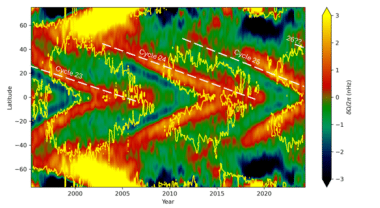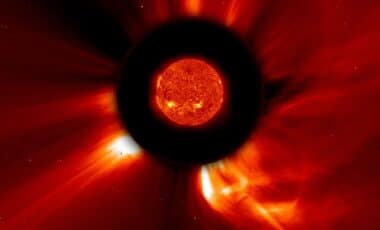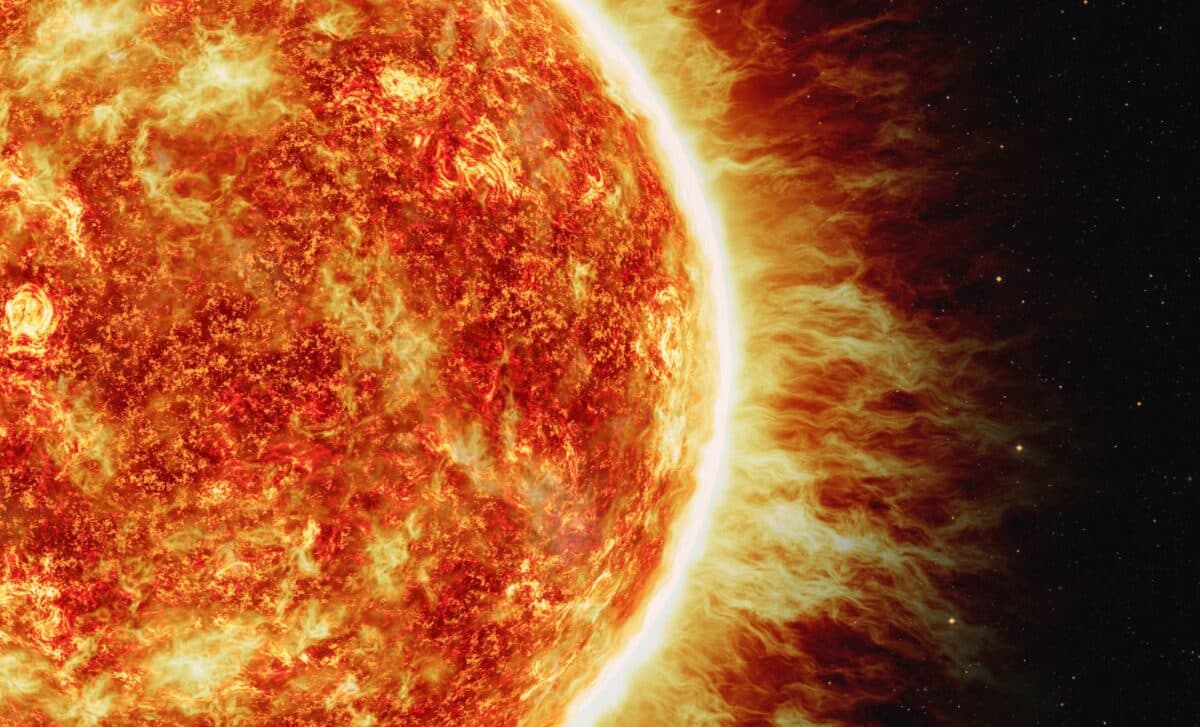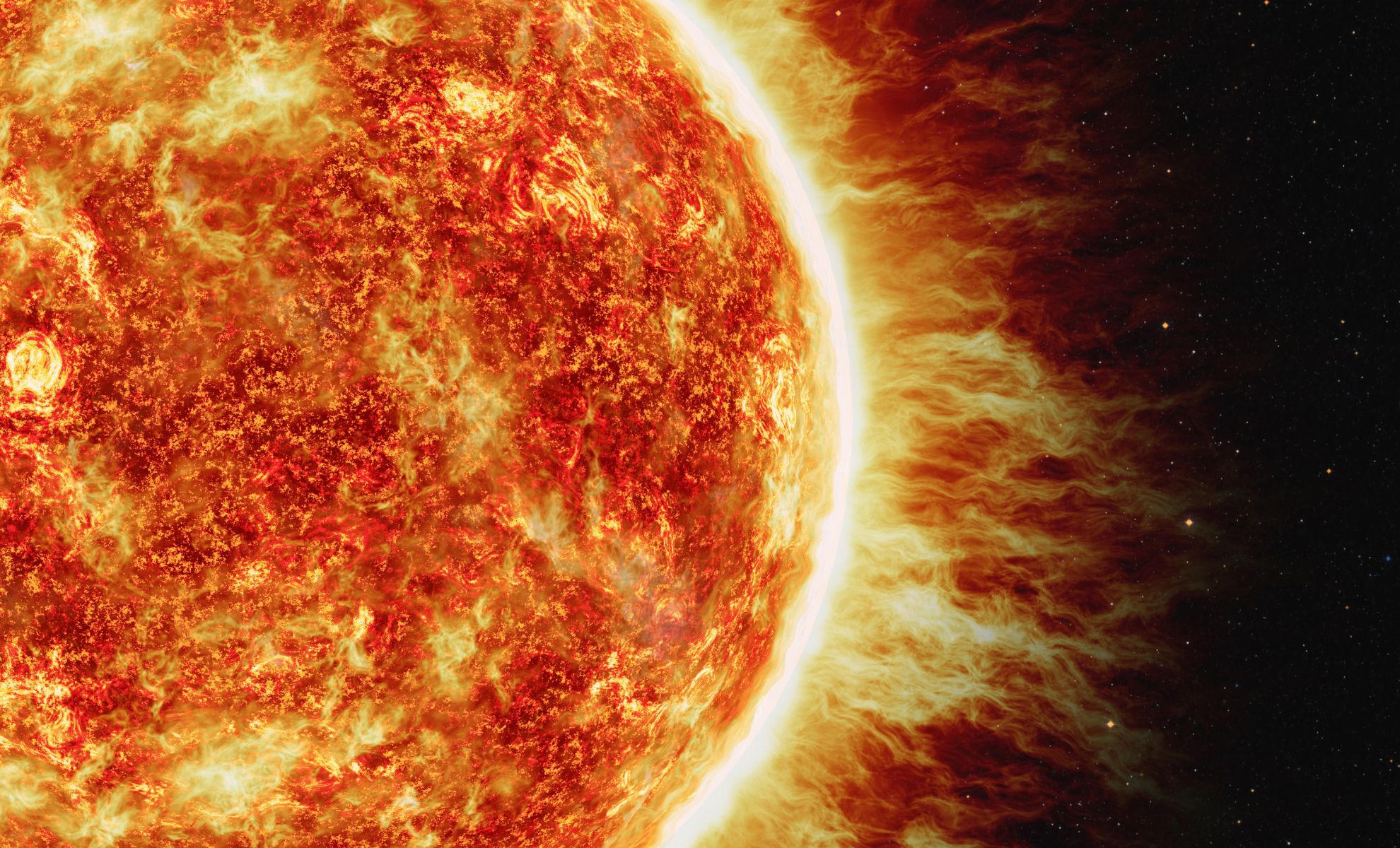The sun, our dynamic and life-sustaining star, is showing early signs of transitioning to its next solar cycle, despite being only halfway through its current one.
This surprising development has significant implications for our understanding of solar dynamics and space weather forecasting.
Researchers from the University of Birmingham have detected these premature indications through advanced helioseismic data, suggesting that the sun's complex internal processes may be more unpredictable than previously thought.
Early Signs of Cycle 26
The current solar cycle, known as Cycle 25, began in 2019 and is expected to reach its peak, or "solar maximum," in mid-2025. During this period, the sun's magnetic field will flip, leading to increased solar activity, including sunspots, solar flares, and coronal mass ejections (CMEs). However, scientists have now observed early signs that the next solar cycle, Cycle 26, is already beginning to manifest.
Researchers utilized helioseismology, a technique that analyzes sound waves traveling through the sun, to detect these early signs. Similar to how seismologists study earthquakes to understand Earth's interior, helioseismologists examine "starquakes" to gain insights into the sun's internal structure and dynamics. Dr. Rachel Howe from the University of Birmingham, who led the research, explained the findings: "If you go back one solar cycle—11 years—on the plot, you can see something similar that seems to join up with the shape that we saw in 2017. It went on to be a feature of the present solar cycle, Cycle 25. We're likely seeing the first traces of Cycle 26, which won't officially start until about 2030."

The Science Behind Solar Cycles
Solar cycles typically last about 11 years and are characterized by periods of high and low solar activity. During the solar maximum, increased sunspot activity, solar flares, and CMEs are common. These phenomena are driven by the sun's magnetic field, which undergoes a regular cycle of flipping polarity. The detection of early signs of Cycle 26 during the peak of Cycle 25 suggests that the processes governing these cycles are more complex than previously understood.

Astronomers use the sun's internal sound waves to measure how it rotates, revealing patterns of bands that rotate at different speeds. These solar torsional oscillations move towards the sun's equator and poles during the activity cycle. The faster-rotating bands tend to appear before the next solar cycle officially begins. "The first rumblings of the Sun's next 11-year solar cycle have been detected in sound waves inside our home star – even though it is only halfway through its current one," Dr. Howe noted.
Implications for Earth and Space Weather
The early detection of Cycle 26 has significant implications for understanding and forecasting space weather. Increased solar activity during solar maxima can impact Earth by disrupting satellite communications, GPS systems, and power grids. Additionally, these solar events can lead to more frequent and vivid auroras as charged particles from the sun interact with Earth's magnetic field.
Dr. Howe and her team have observed that solar torsional oscillation signals, analyzed using data from the Global Oscillation Network Group (GONG), the Michelson Doppler Imager (MDI) on the Solar and Heliospheric Observatory (SOHO), and the Helioseismic and Magnetic Imager (HMI) on the Solar Dynamics Observatory (SDO), indicate the early emergence of Cycle 26. "It's exciting to see the first hint that the pattern will repeat again in Cycle 26, which is due to start in about six years," Dr. Howe said. "With more data, I hope we can understand more about the part these flows play in the intricate dance of plasma and magnetic fields that form the solar cycle."
Preparing for the Future
The early onset of Cycle 26 means that scientists and engineers must prepare for potentially overlapping periods of heightened solar activity. Understanding the mechanisms behind these cycles is crucial for developing accurate space weather forecasts and mitigating their effects on Earth's technological infrastructure. Continuous monitoring of the sun through missions like SDO and ground-based observatories provides valuable data for predicting solar activity and protecting critical systems on Earth.
The research presented at the Royal Astronomical Society's National Astronomy Meeting underscores the importance of collaboration and ongoing study in the field of solar physics. By advancing our knowledge of solar cycles, scientists can better anticipate and respond to the challenges posed by space weather. "With more data, I hope we can understand more about the part these flows play in the intricate dance of plasma and magnetic fields that form the solar cycle," Dr. Howe emphasized.




